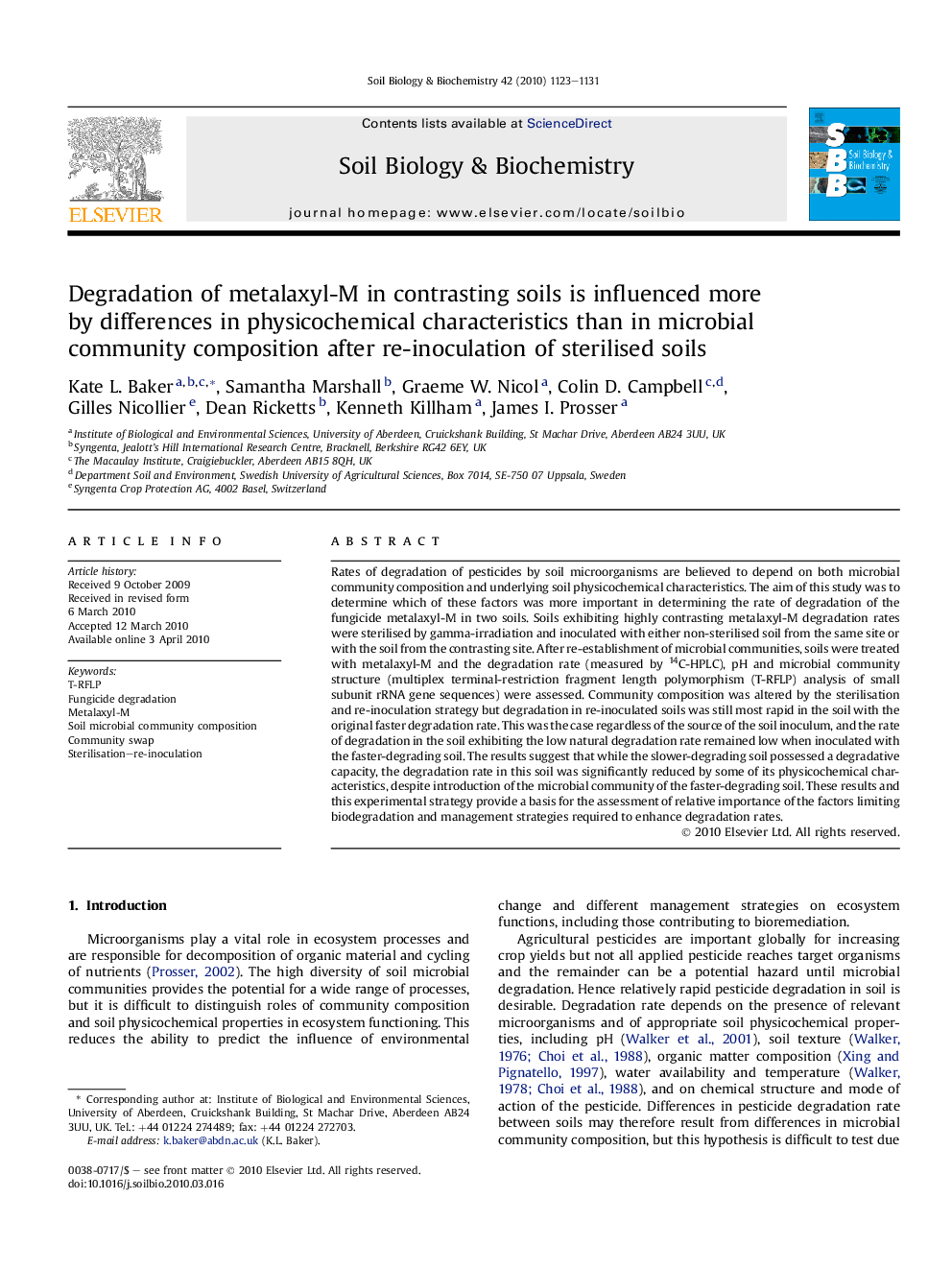| Article ID | Journal | Published Year | Pages | File Type |
|---|---|---|---|---|
| 2026272 | Soil Biology and Biochemistry | 2010 | 9 Pages |
Rates of degradation of pesticides by soil microorganisms are believed to depend on both microbial community composition and underlying soil physicochemical characteristics. The aim of this study was to determine which of these factors was more important in determining the rate of degradation of the fungicide metalaxyl-M in two soils. Soils exhibiting highly contrasting metalaxyl-M degradation rates were sterilised by gamma-irradiation and inoculated with either non-sterilised soil from the same site or with the soil from the contrasting site. After re-establishment of microbial communities, soils were treated with metalaxyl-M and the degradation rate (measured by 14C-HPLC), pH and microbial community structure (multiplex terminal-restriction fragment length polymorphism (T-RFLP) analysis of small subunit rRNA gene sequences) were assessed. Community composition was altered by the sterilisation and re-inoculation strategy but degradation in re-inoculated soils was still most rapid in the soil with the original faster degradation rate. This was the case regardless of the source of the soil inoculum, and the rate of degradation in the soil exhibiting the low natural degradation rate remained low when inoculated with the faster-degrading soil. The results suggest that while the slower-degrading soil possessed a degradative capacity, the degradation rate in this soil was significantly reduced by some of its physicochemical characteristics, despite introduction of the microbial community of the faster-degrading soil. These results and this experimental strategy provide a basis for the assessment of relative importance of the factors limiting biodegradation and management strategies required to enhance degradation rates.
